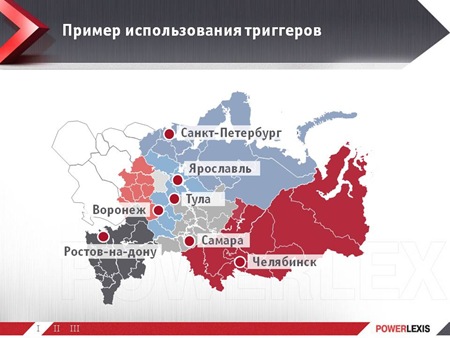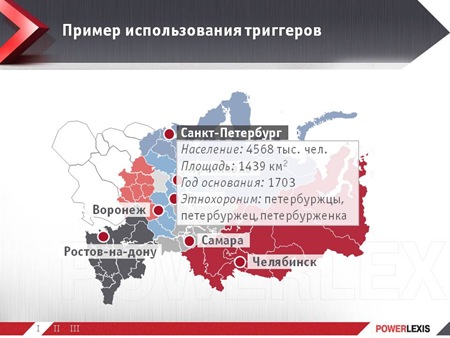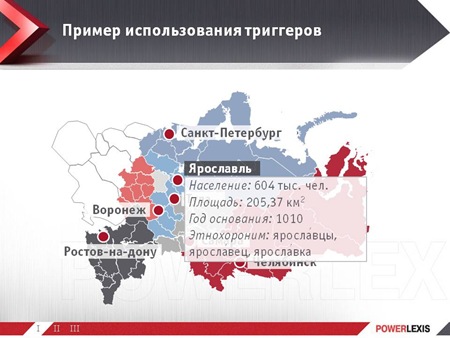When you want interactivity ...
All novice sliders rejoice like children, finding the function of animation. But very few people even from experienced presentation creators know that the animation can unfold on a slide not only in a strictly defined sequence (by clicking, with the previous one, after the previous one), but also more flexibly.
We are talking about the use of so-called triggers (switches), when clicked, which can occur a given animation or a sequence of animations.
For example, we need on this slide to optionally open on the slide additional information about cities.

')
So that when you click on the designation of St. Petersburg, there is such a field:

and when you click on Yaroslavl - here is this:

well and for other cities that it was possible to cause the same fields.
So, after assigning the appropriate animation effects, click on the triangle near the name of the effect and go to the menu “effect parameters” >> tab “time” >> button “switches”. There we put the switcher in the “Start the effect when clicked” position and select the switch object.
blog.powerlexis.ru/images/c2b995144771_BC83/image.png
And so for all cities ...
And we have a wonderful interactive map, with the help of which we can instantly answer the question “how can you call the residents of the village of Yaya right?”
What do you use triggers for?
We are talking about the use of so-called triggers (switches), when clicked, which can occur a given animation or a sequence of animations.
For example, we need on this slide to optionally open on the slide additional information about cities.

')
So that when you click on the designation of St. Petersburg, there is such a field:

and when you click on Yaroslavl - here is this:

well and for other cities that it was possible to cause the same fields.
So, after assigning the appropriate animation effects, click on the triangle near the name of the effect and go to the menu “effect parameters” >> tab “time” >> button “switches”. There we put the switcher in the “Start the effect when clicked” position and select the switch object.
blog.powerlexis.ru/images/c2b995144771_BC83/image.png
And so for all cities ...
And we have a wonderful interactive map, with the help of which we can instantly answer the question “how can you call the residents of the village of Yaya right?”
What do you use triggers for?
Source: https://habr.com/ru/post/52053/
All Articles